1959

The first Barbie doll released March 9, 1959, with the title Teenage Fashion Model Barbie. Dressed in a memorable black-and-white one-piece and her signature blonde hair, Barbie was an instant phenomenon. Sporting a curvy figure, arched eyebrows, and red lips, she broke away from the typical child-like dolls of the time.
Named after Mattel co-founder Ruth Handler's daughter, Barbara Millicent Roberts, Barbie quickly soared to popularity, setting a new standard for dolls and inspiring young girls to dream beyond traditional roles. Over the years, she evolved to embrace diversity, featuring various skin tones, hairstyles, and career options, though she faced criticism for perpetuating unrealistic body ideals.
1961
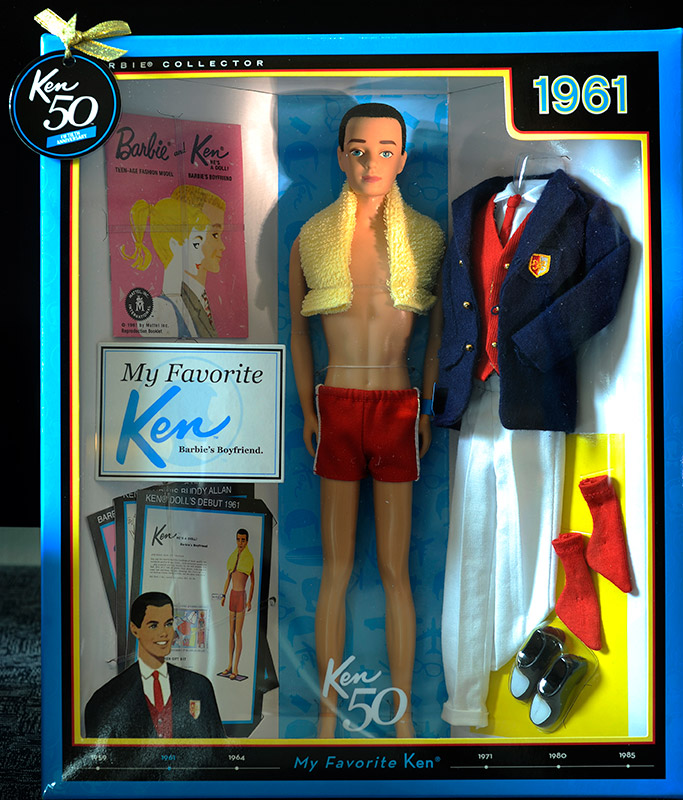
The 1961 Barbie doll, known as "Bubblecut Barbie," was a significant evolution of the iconic fashion doll. Introduced in 1961 by Mattel, Inc., Bubblecut Barbie retained the adult figure and sophisticated fashion sense but featured a new hairstyle characterized by a sleek, shoulder-length bob with soft curls at the ends. This innovative hairdo, nicknamed "Bubblecut," became one of the most iconic Barbie hairstyles of all time.
Two short years after Barbie’s debut, her longtime boyfriend, Ken, stepped onto the scene. He adorably matched Barbie’s swim look with a red-striped shirt and fiery trunks. He and Barbie might have split since their initial pairing, but they always find their way back to each other.
1965
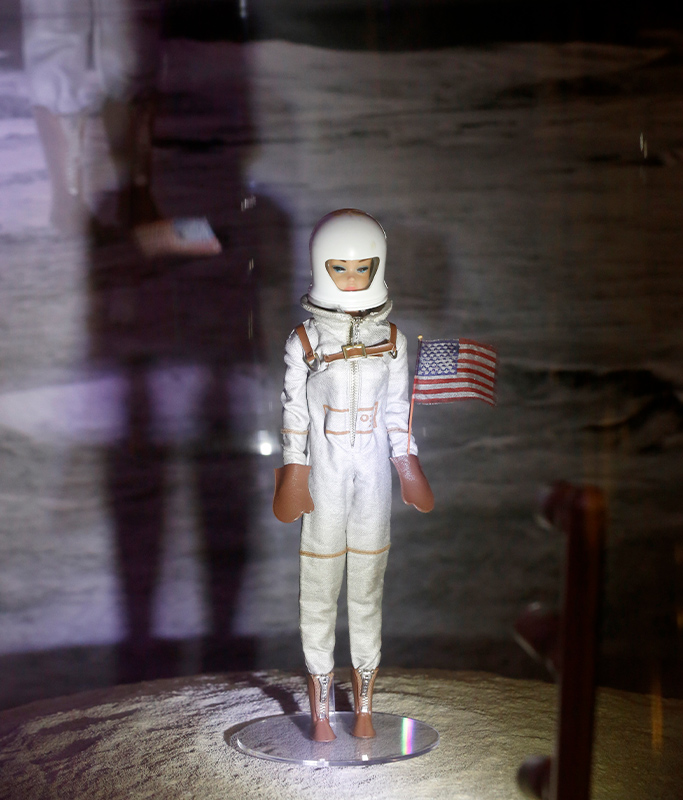
The 1965 Barbie, known as "American Girl Barbie," marked another significant milestone in the evolution of the iconic fashion doll. Introduced by Mattel in 1965, the American Girl Barbie was a departure from the previous models, featuring a more natural and wholesome appearance. This Barbie came with different hair colors, including blonde, brunette, and redhead, and she had a bendable leg design, allowing for more poses and playability.
Barbie had multiple stints as a space explorer, from her first “Miss Astronaut” outfit emerging in 1965, which resembled the classic American space suit, to the 2013 “I can be a NASA Mars Explorer." The first space edition of Barbie occurred two years after the world’s first female astronaut Valentina Tereshkova flew into space.
1968
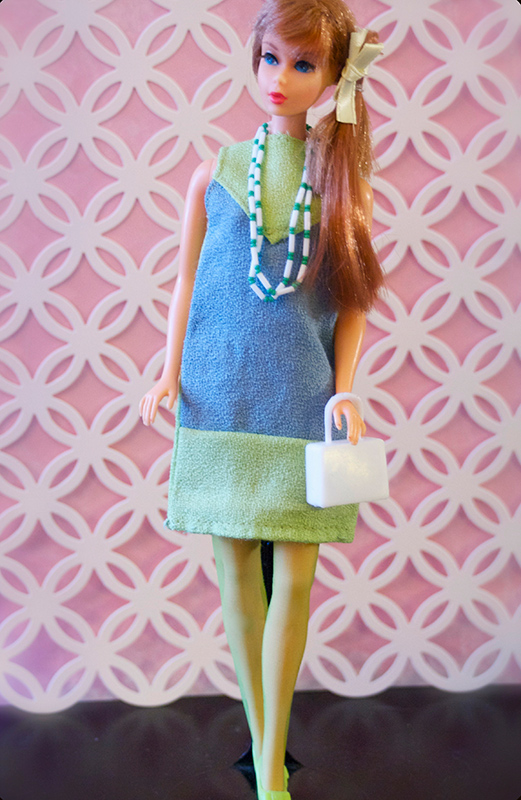
The 1968 Barbie, known as "Twist 'n Turn Barbie," was a revolutionary update to the iconic fashion doll. Introduced by Mattel in 1967 and widely available in 1968, Twist 'n Turn Barbie featured a significant innovation—a waist that could twist and bend, allowing her to move and strike a wider range of poses. This enhanced articulation made the doll more interactive and appealing to children.
Her fashion choices reflected the era's trends, including colorful mini dresses, bell-bottom pants, and vibrant patterns. She also sported long, flowing hair with trendy hairstyles like flips and braids. Plus, after nine years of silence, Mattel released a Barbie who could speak with a simple pull of the string. While her words weren’t extraordinary (“What shall I wear to prom?”), the technology brought her realism to a new level.
1970
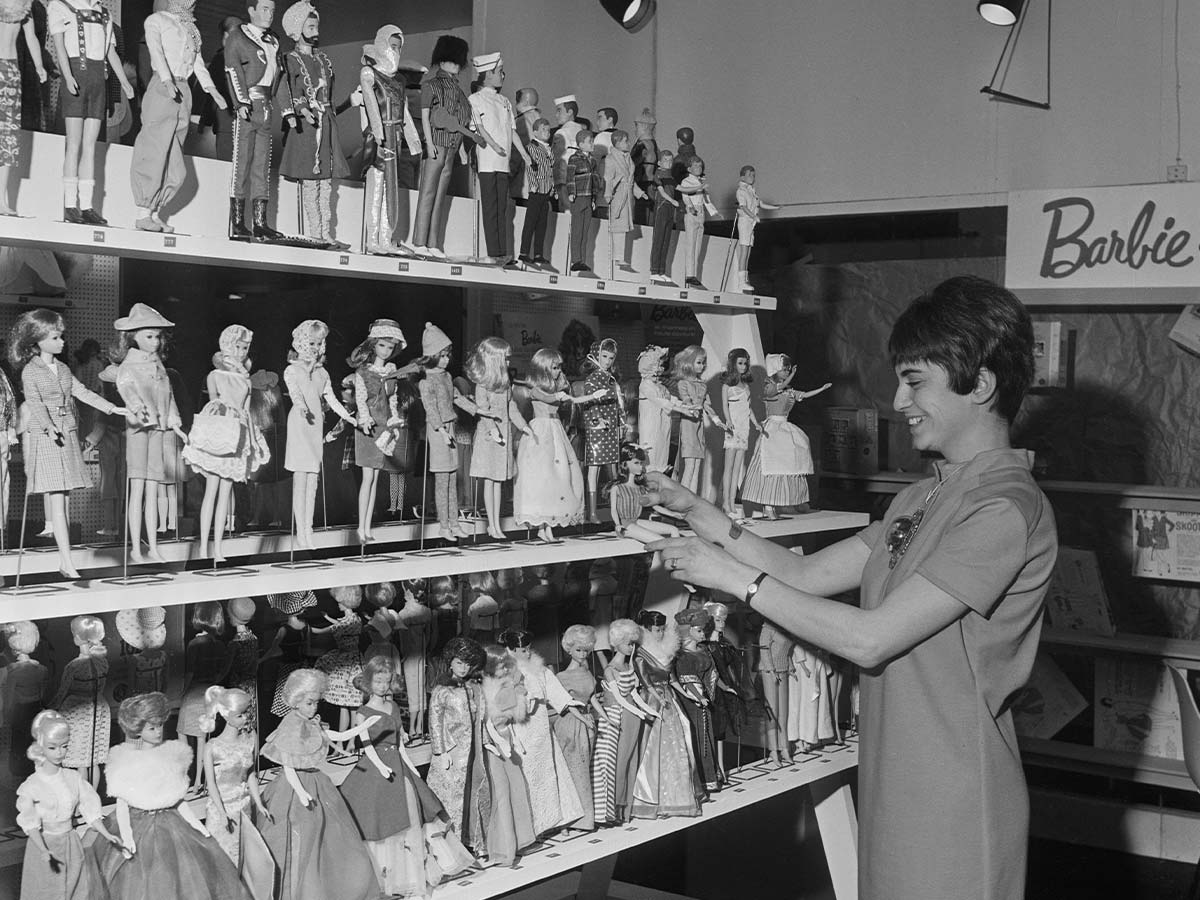
The first Twist N Turn Barbie released in 1967, but the line expanded into the new decade with a '70s flair that no kid could resist! This Barbie—with her movable waist, rooted eyelashes, and new face mold—was a nod to the “mod” era of fashion defined by modernist ideals and ever-changing silhouettes.
During the 1970s, Barbie also explored various careers, embracing the growing movement of women in the workforce. Barbie dolls were released as doctors, astronauts, athletes, and more, encouraging girls to dream big and pursue their ambitions beyond traditional roles.
1971
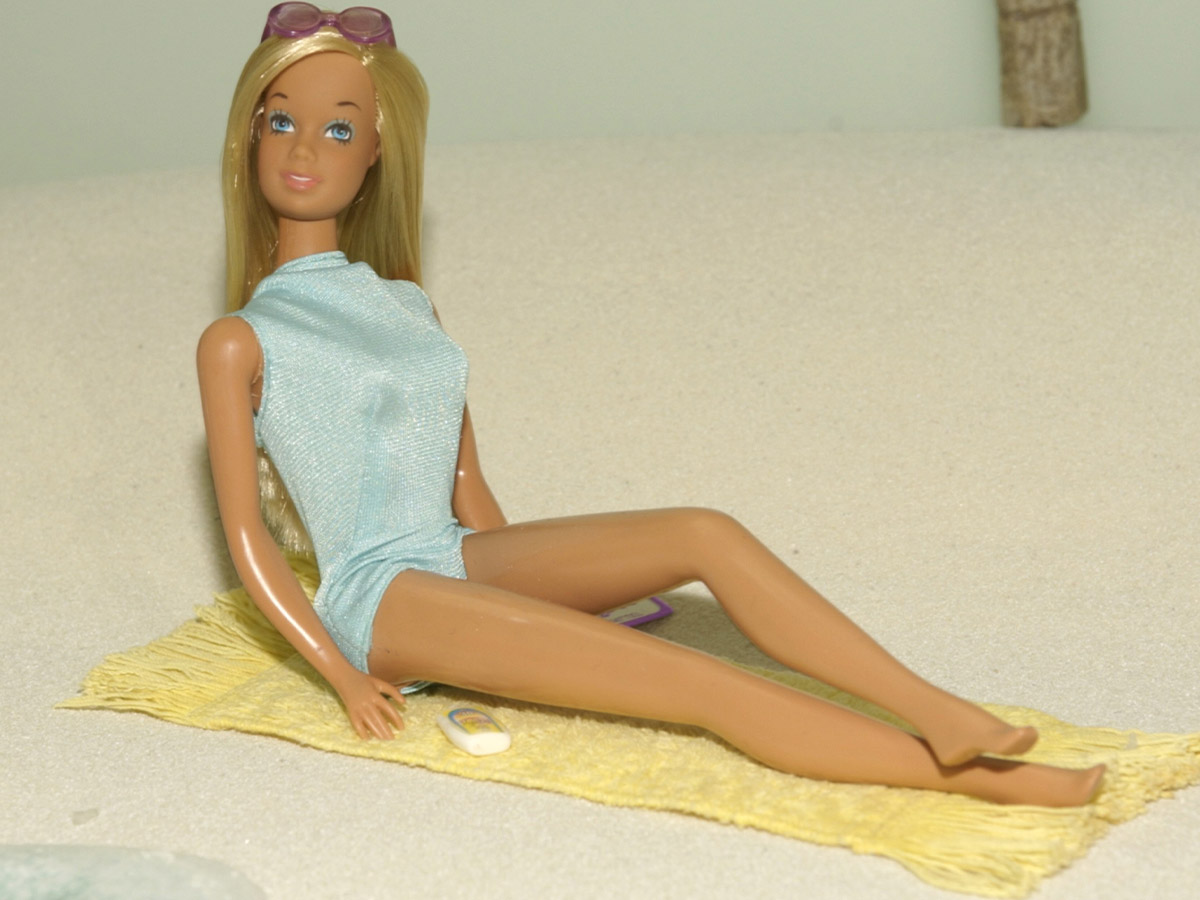
The most influential doll of the “mod” era was the Sunset Malibu Barbie, who sported the popular Stacey face shape and iconic California girl look. Enormously popular, this Barbie was sold up until 1977. The so-called California Girl reflected the laid-back and carefree spirit of the 1970s, as inspired by the Southern California beach culture that embraced a relaxed and sun-kissed vibe.
She had a more natural makeup look and featured long, straight, and often sun-streaked hair that epitomized the casual and beachy style of the era. Malibu Barbie's fashion choices included colorful and trendy outfits like halter tops, bell-bottom pants, and maxi dresses, reflecting the groovy fashion of the 1970s. She often wore platform shoes and large sunglasses, adding to her chic and fashionable appearance.
1974

It’s no surprise that Barbie took the title of Miss America in 1974, as she was a visual representation of women’s beauty standards. Crown, scepter, and all, Barbie was pageant perfection from head to toe. Additionally, Mattel introduced "Busy Barbie," a doll that epitomized the changing roles and interests of women during that time. Busy Barbie was designed to showcase Barbie's versatility and her ability to balance various careers and hobbies.
This version of Barbie came with several different outfits and accessories, representing a wide range of professions and activities. Busy Barbie's outfits included clothing for careers like nurse, flight attendant, and teacher, as well as outfits for hobbies like tennis, skiing, and horseback riding. She also came with various accessories, such as a briefcase, tennis racket, and helmet, to complement her different roles.
1977

The late '70s transformed Barbie again when the Superstar face was introduced, defining Barbies for the next few decades. The Fashion Model Barbie had all of the Superstar features, including a big smile, flowing blonde locks, and wistful gaze. The 1977 Superstar Barbie was a glamorous and iconic doll that captured the glitz and glamour of the disco era and Hollywood's golden age.
Superstar Barbie's wardrobe was nothing short of extravagant. She wore dazzling and elegant outfits, such as sequined gowns, disco-inspired jumpsuits, and stylish accessories like oversized sunglasses, statement jewelry, and feather boas. The doll came with a microphone and a spotlight, further accentuating her glamorous Hollywood image.
1980

Black Barbie, the first African-American Barbie doll to sport the Barbie title, was released in the ‘80s. Christie, released in ‘68, was introduced as Barbie’s friend and was also black, but she did not hold the official name Barbie. This doll used the existing Steffie face mold instead of creating an independent mold for the new Barbie.
With the release of Black Barbie, Mattel aimed to offer representation to children of color, allowing them to see themselves reflected in their playthings. This doll's introduction was a response to the growing demand for more diverse and inclusive toys that represented a broader range of ethnic backgrounds.
1985
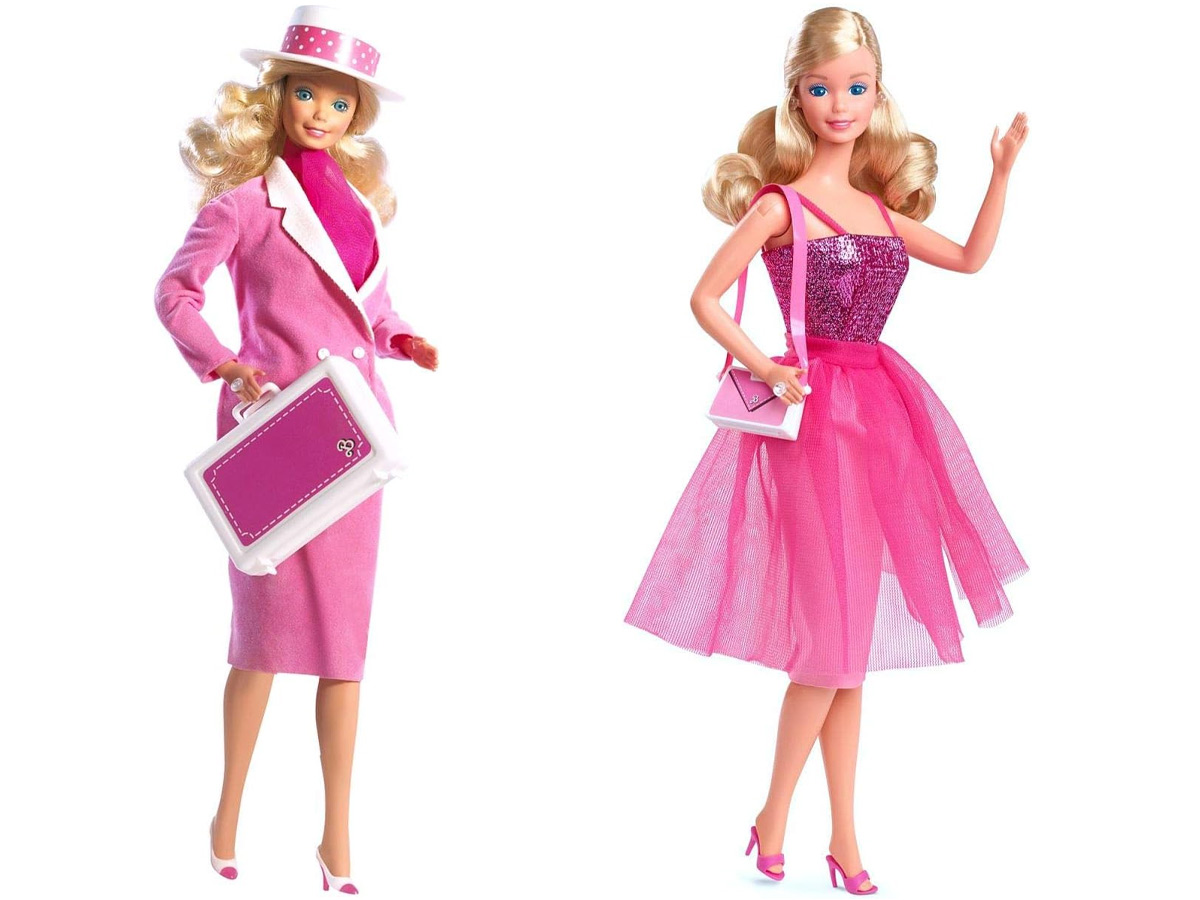
The ‘85 release of Day-to-Night Barbie is a self-explanatory concept that represented the era’s workplace revolution for women. For day, she sports a classic pink power suit, briefcase, hat, and calculator. For evening, the outer layer strips away to reveal a spaghetti-strapped and sparkly dress for a party.
This doll was designed to transform her look from daywear to evening glamour, capturing the essence of a modern, career-driven woman who seamlessly transitioned from work to social events. This Barbie doll was a reflection of the increasing number of women entering the workforce and balancing professional and social lives.
1988
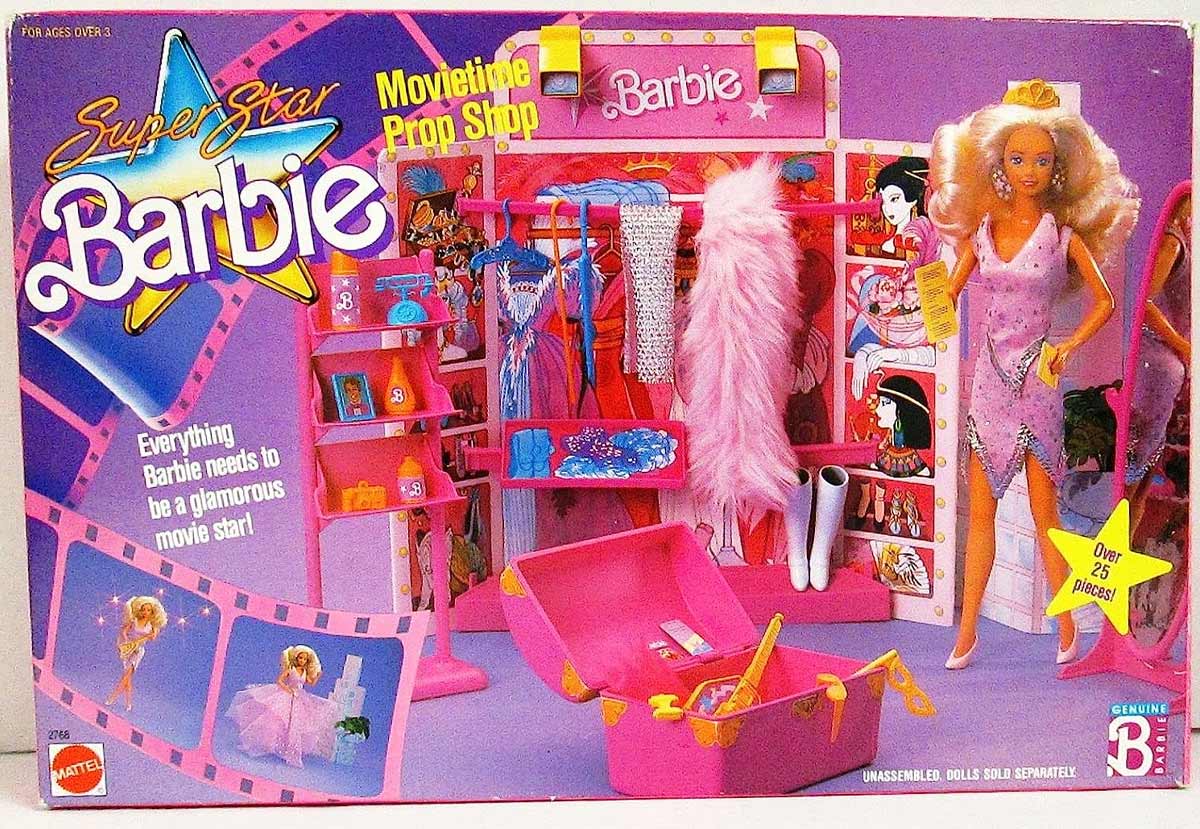
The Superstar Barbie line reached its apex with the ‘88 Super Star “Award-winning movie star!” This Barbie epitomizes the ‘80s with huge bombshell hair, faux fur, and a dress that transforms into four different silhouettes. This doll embraced the glitz and allure of Hollywood, embodying the essence of a famous celebrity and movie star. Movie Star Barbie was designed to captivate imaginations and transport children into the world of showbiz and stardom.
This Barbie doll came dressed in a luxurious and extravagant gown, reminiscent of the red-carpet fashion seen at prestigious award shows. She often had sophisticated hairstyles and sparkling makeup, exuding elegance and sophistication. As a Movie Star, Barbie's accessories included items like a clutch purse, jewelry, and a movie award trophy. The doll allowed children to create their own imaginary movie premieres and glamorous events.
1990

After years of the Superstar face, a Bob Mackie collaboration resulted in the Mackie mold and beautiful collectible Barbies. The most extravagant creation was the Bob Mackie Gold Barbie, featuring a fitted gown adorned with 5,000 hand-sewn sequins, feather boa, and gold headpiece.
As a limited edition doll, the Bob Mackie Barbie quickly became a coveted collector's item due to its exquisite craftsmanship and association with a renowned designer. This Barbie exemplified the glamour and allure of high fashion and solidified Barbie's status as a timeless and sophisticated icon of style and elegance.
1992

Everyone knows the Totally Hair Barbie, which is the best-selling Barbie ever with more than 10 million dolls sold worldwide. Her hair was the longest it had ever been, reaching her toes and held back with a pink headband. Here, Barbie represents the big hair craze and loud fashions overflowing from the ‘80s into the early ‘90s.
The doll's hair extended all the way to her ankles, allowing for various hairstyling possibilities. It featured streaks of bright colors like pink, purple, and blue, reflecting the edgy and funky style of the decade. The immense success of Totally Hair Barbie cemented her status as a cultural icon, capturing the spirit of the 1990s and representing the era's embrace of individuality and self-expression through fashion and style.
1999
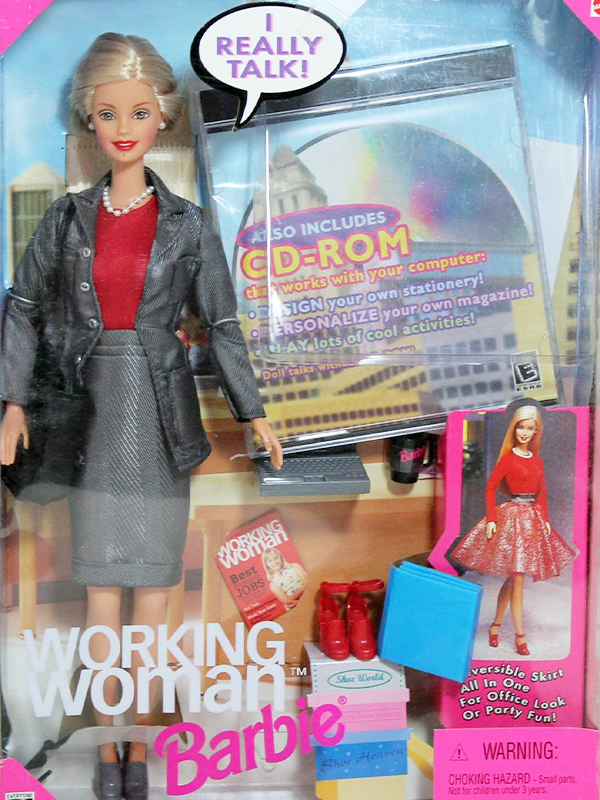
The Working Woman Barbie of 1999, like the Day-to-Night Barbie of '85, markets women in the workplace to young girls. Instead of merely embodying beauty and fashion, Barbie wears a practical pencil skirt for the day and a reversible skirt for evening parties. This Barbie doll aimed to inspire young girls by showcasing various professional paths and encouraging them to dream big.
The Working Woman Barbie came with different career-themed outfits and accessories, such as business attire for a corporate executive, a lab coat for a scientist, or a painter's smock for an artist. The doll also featured tools and props related to each profession, emphasizing the importance of education, ambition, and hard work. Plus, she could talk!
2000

Barbie’s Presidential campaigns each election season started in 1992, and she only sat out in ‘96. For her turn-of-the-century White House bid, she sported pearls, a bob haircut, a blue power suit, and matching pantyhose. The 2000 Presidential Barbie was a special edition doll to commemorate the U.S. presidential election that took place that year.
Plus, this Barbie was created to encourage young girls to take an interest in politics and inspire them to consider leadership roles. The Presidential Barbie was dressed in a stylish, patriotic outfit, reflecting the colors of the American flag. She came with campaign-themed accessories, such as a miniature podium, a campaign button, and a mini brochure. The doll aimed to emphasize the significance of civic engagement and the democratic process.
2001

Second in the series of new-millennium-themed Barbies, the 2001 version spares no expense with an icy blue organza ball gown and “2001” tiara. The Millennium Princess Barbie wore an exquisite gown with a celestial-inspired theme, featuring shades of blue and silver to evoke the night sky and stars.
As a collector's item, the Millennium Princess Barbie was highly sought after by Barbie enthusiasts and those looking to commemorate the significant turn of the millennium. This doll served as a memento of a historic moment and the anticipation of a promising future, capturing the excitement and enthusiasm that surrounded the start of the 21st century.
2005
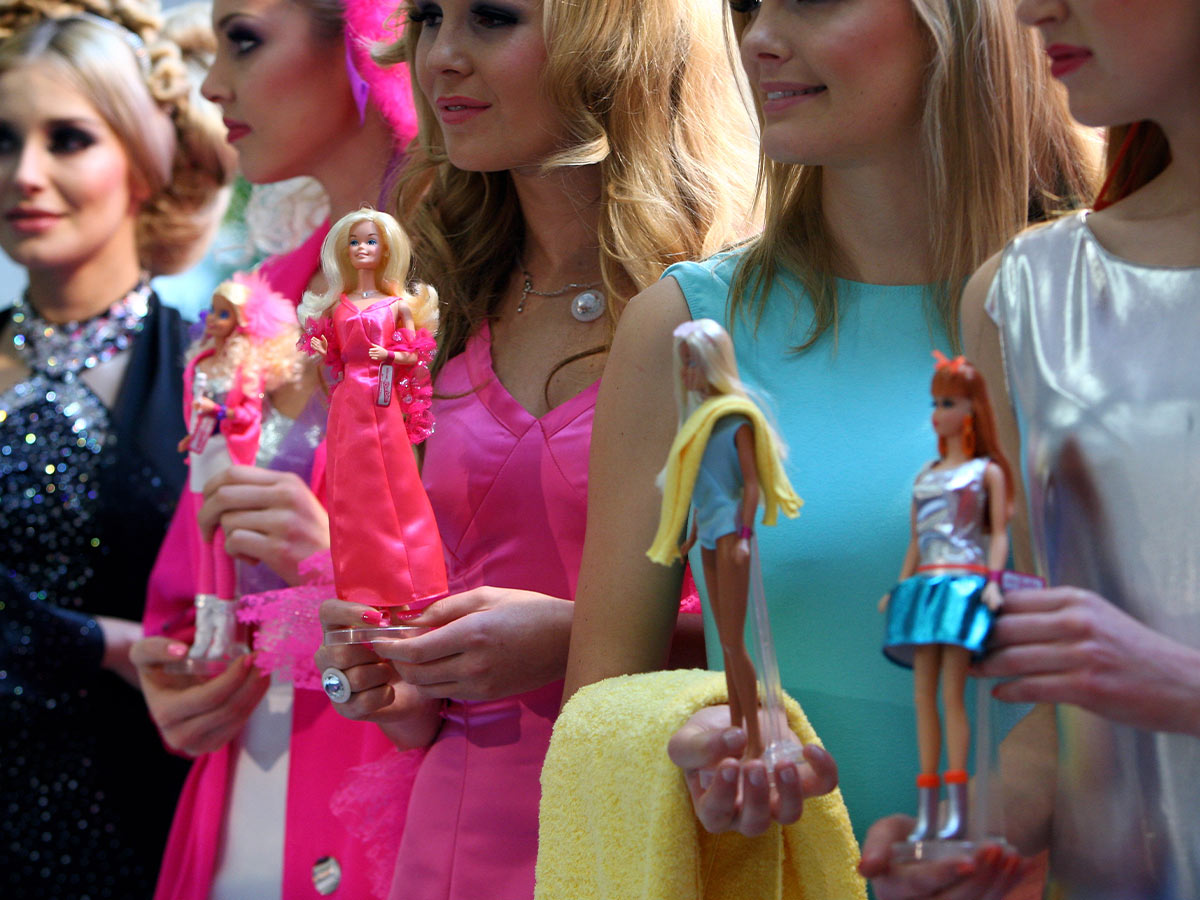
The 2000s brought about a line of Career Barbies for kids to choose from. The Producer Barbie from 2005 is particularly unique with her cutting edge style, bold bangs, and retro face mold. Everyone knows that a briefcase means business, and Barbie’s never afraid of hard work.
This Barbie was a career-themed doll that celebrated the world of entertainment and filmmaking. The Producer Barbie served as a positive and empowering role model, promoting creativity, ambition, and the idea that women can excel in diverse careers, including those in the male-dominated entertainment industry.
2010

During the initial push to encourage young women to pursue careers in S.T.E.M., Barbie joined the tech revolution as a computer engineer. Barbie, with her computer, glasses, earpiece, and coding-themed clothes, is at the forefront of inclusive workplace advocacy. The doll's appearance promoted a positive image of a modern and tech-savvy woman, breaking stereotypes and inspiring girls to consider careers in S.T.E.M.
Mattel collaborated with the Society of Women Engineers and the National Academy of Engineering to ensure the doll's portrayal accurately represented the world of computer engineering. The Computer Engineer Barbie served as an empowering role model, advocating for gender equality in STEM and encouraging girls to embrace their passion for technology and innovation.
2016

The 2015 FindYourStyle Barbies were revolutionary with the introduction of diverse skin tones, hairstyles, and face shapes, and the 2016 Fashionistas continued the trend of inclusivity. The biggest Barbie release in recent history, the Fashionista line featured four body types—the original, tall, curvy, and petite—that counters popular criticism of Barbie’s unrealistic body standards. 2017 also introduced different varieties of the Ken doll.
This line of Barbie dolls was a response to the growing demand for more inclusive and diverse toys that allowed children to explore their own sense of fashion and self-expression. The Find Your Style Barbie provided a fun and interactive experience, empowering girls to embrace their unique tastes and celebrate their individuality.
2017
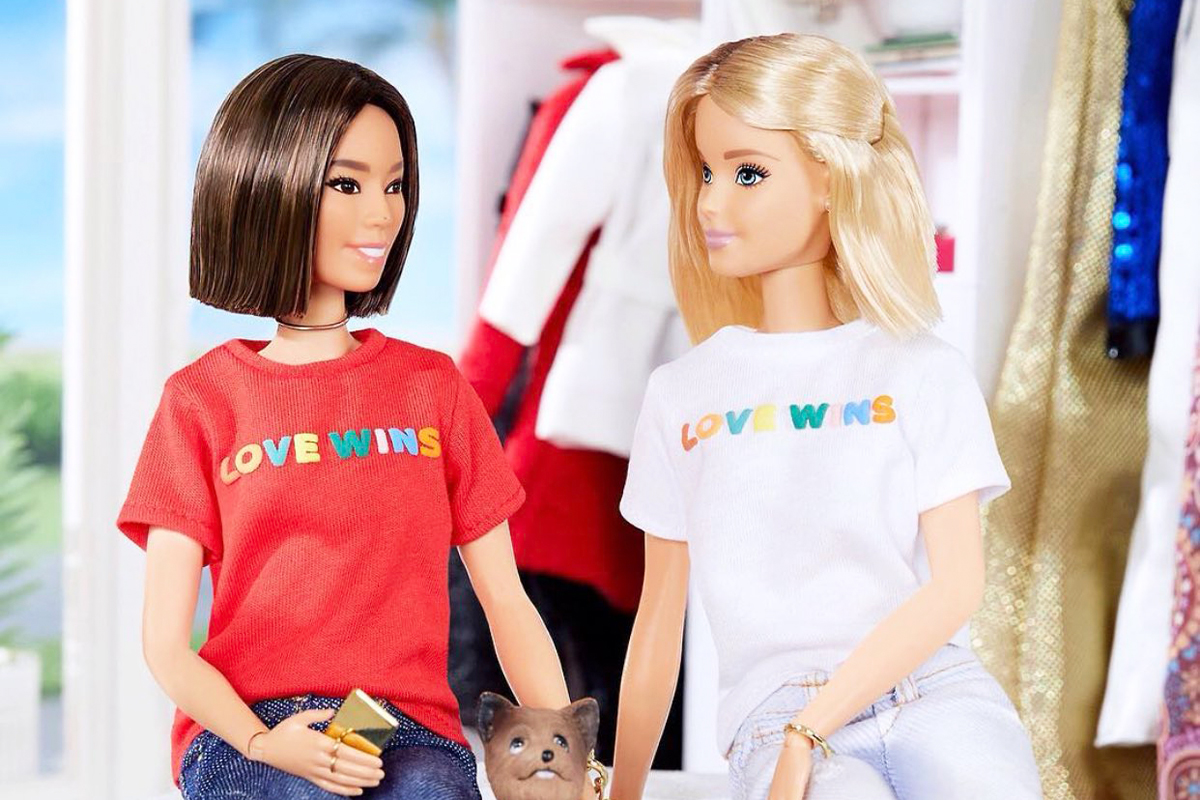
2017's release of the "Love Wins Barbie" won many people over to the Barbie brand, mainly due to rumors that Barbie is bisexual. Official pictures of two dolls sporting multicolored shirts saying "Love Wins" have recently resurfaced on Twitter, making fans go wild all over again, and critics all the more upset.
Unfortunately, we can't confirm or deny Barbie's taste in romantic interests besides Ken, but we can confidently say that Mattel donated 50% of profits for this Barbie directly to the Trevor Project, an organization that provides crisis intervention and suicide prevention services to LGBTQIA+ young adults.
2018

2018 introduced a line of Barbies inspired by real-life female role models, including gymnast Gabby Douglas and artist Frida Khalo. These are by no means the first celebrity Barbies to exist, with the first occurring in 1967 resembling the model Twiggy, yet are incredibly cool nonetheless. Imagine growing up and becoming an inspirational Barbie doll!
This "Inspiring Women" series of Barbies aimed to celebrate and honor the achievements of extraordinary women, providing girls with positive and empowering role models. Each doll came with detailed and accurate representations of the women's outfits and accessories, as well as educational information about their accomplishments.
2023
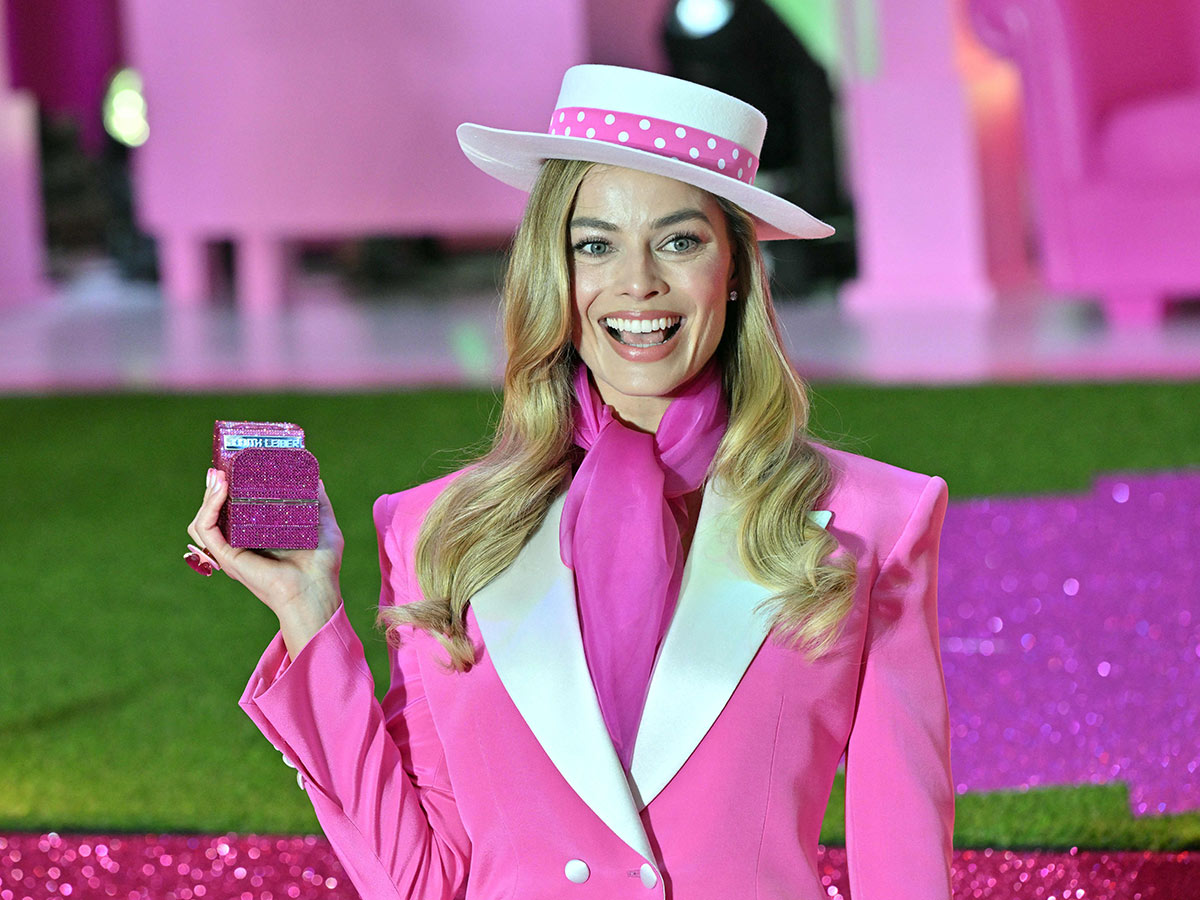
Barbie has no shortage of films on the market that are beloved by viewers of all ages, and the most recent release of Greta Gerwig's Live-Action Barbie Movie featuring Margot Robbie is no exception. Margot Robbie's resemblance to Barbie is striking, making her the perfect fit to play the plastic princess. From her blonde hair and blue eyes to her perfectly symmetrical features, she embodies the classic beauty of Barbie.
Margot Robbie is a highly acclaimed actress known for her roles in films like "The Wolf of Wall Street," "Suicide Squad," and "Once Upon a Time in Hollywood." On the Barbie Movie press tour, Robbie and her co-star Ryan Gosling (Ken) have sported countless Barbie-inspired outfits, ranging from direct replicas to subtle nods.
 Author
Darby Tanner
Last Updated: July 20, 2023
Author
Darby Tanner
Last Updated: July 20, 2023